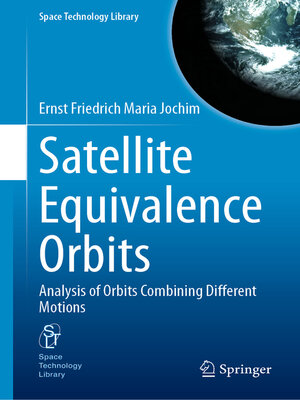Satellite Equivalence Orbits
ebook ∣ Analysis of Orbits Combining Different Motions · Space Technology Library
By Ernst Friedrich Maria Jochim

Sign up to save your library
With an OverDrive account, you can save your favorite libraries for at-a-glance information about availability. Find out more about OverDrive accounts.
Find this title in Libby, the library reading app by OverDrive.



Search for a digital library with this title
Title found at these libraries:
| Library Name | Distance |
|---|---|
| Loading... |
This book presents the essential characteristics of the different satellite motions. Satellite motions can be classified as anomalistic, draconitic, tropical, Hansen-, Kepler-, meridional, Sun-synodical, Moon-synodical motion, depending on the relevant reference point. When two of these types of motions (in some cases even more than two) are coupled, satellite orbits are obtained, which are called equivalence orbits in this book. They share the special properties of the different coupled motions and are therefore of particular interest in the selection of special satellite orbits.
In the book the author calculates mean equivalence orbits with secular perturbation formulas, as well as true equivalence orbits considering a complete orbit model including periodic motion effects. Some of the equivalence orbits can be determined unambiguously and with extremely high accuracy, they are stable in the long term. Others can only be found with low accuracy and reduced stability. The author investigates all possible combinations and the associated general equations of condition are derived in each case. Some well-known families of satellite orbits, such as the Sun-synchronous orbits, can be interpreted as mean equivalence orbits. The study of their stability is of great interest in orbit mechanics. Special applications and numerous numerical examples, graphical representations of all possible ranges of the Kepler elements, and detailed studies of the stability of particularly important equivalence orbits are carried out using the Brouwer orbit model as well as the modification by Eckstein.
This lays the foundation for possible refinements using arbitrary extended orbital models and for possibly required orbital corrections. Numerous problems are to deepen the treated topics and/or to stimulate for further investigations.
The book will be of interest to Astrodynamics and Aerospace Engineers as well as graduate students studying satellite orbits.







